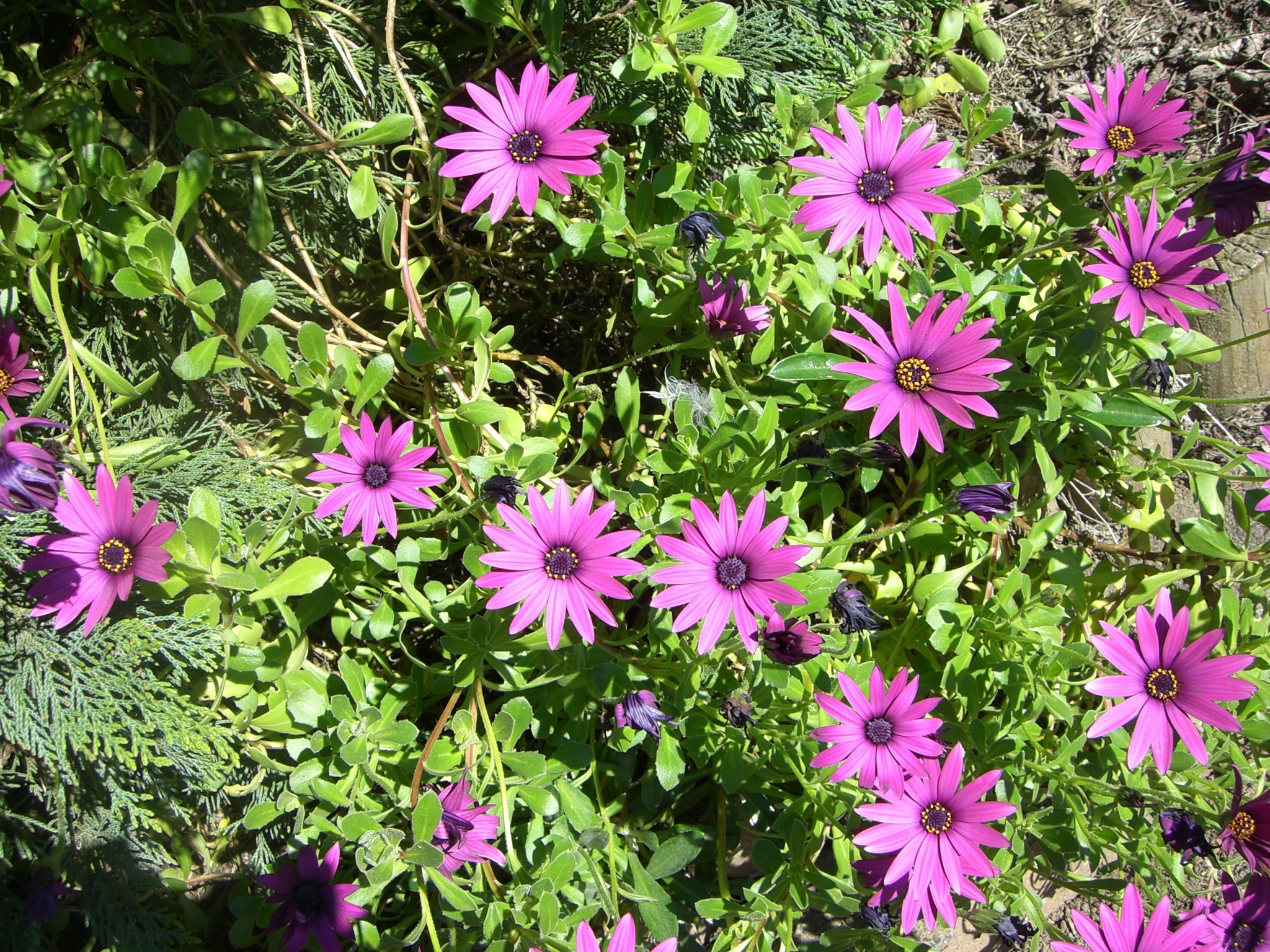
Greek osteon — bone, sperma — seed, an allusion to the hard achene of some species.
Annual or perennial herbs, subshrubs or shrubs, glabrous to hairy. Stems erect, ascending or decumbent, branched. Leaves along stems, alternate or sometimes opposite, margins entire to divided. Capitula radiate, terminal, solitary or in loose panicles, with stalks. Involucral bracts in 1-4 rows, overlapping, more or less equal. Receptacle pitted, flat to convex. Ray florets female, ligulate, white, yellow, orange or reddish. Disk florets functionally male, tubular, yellow, white or violet. Achenes cylindrical, winged, angled or beaked, straight or curved, ribbed or warty, glabrous, inner ones abortive. Pappus of broad scales, sometimes bristles or narrow scales also present.
These are perennial plants sometimes used for annual bedding and, as a result of interbreeding, intergrading with Dimorphotheca. Five species have become naturalised in Australia.
White, yellow, orange or reddish ligules, sometimes white, blue or purplish on outer (lower) surface; functionally male disk florets with abortive achenes.
About 45 species from Africa and the Middle East, mostly from South Africa.
Source: (2002). Dahlia. In: . Horticultural Flora of South-eastern Australia. Volume 4. Flowering plants. Dicotyledons. Part 3. The identification of garden and cultivated plants. University of New South Wales Press.
